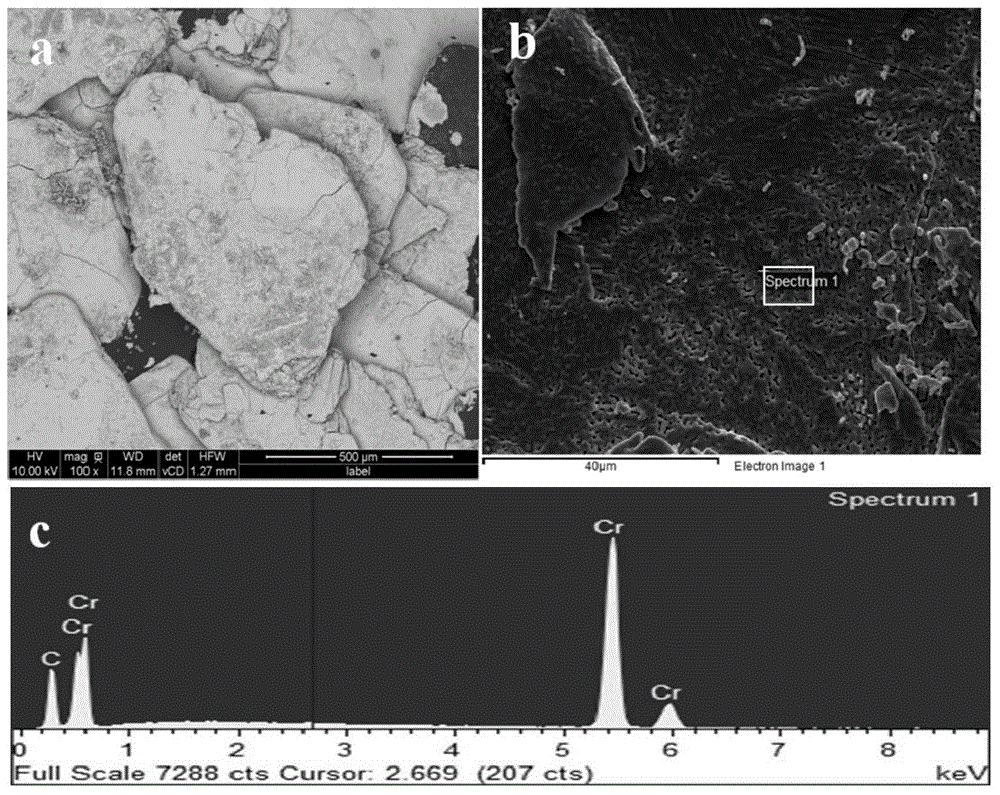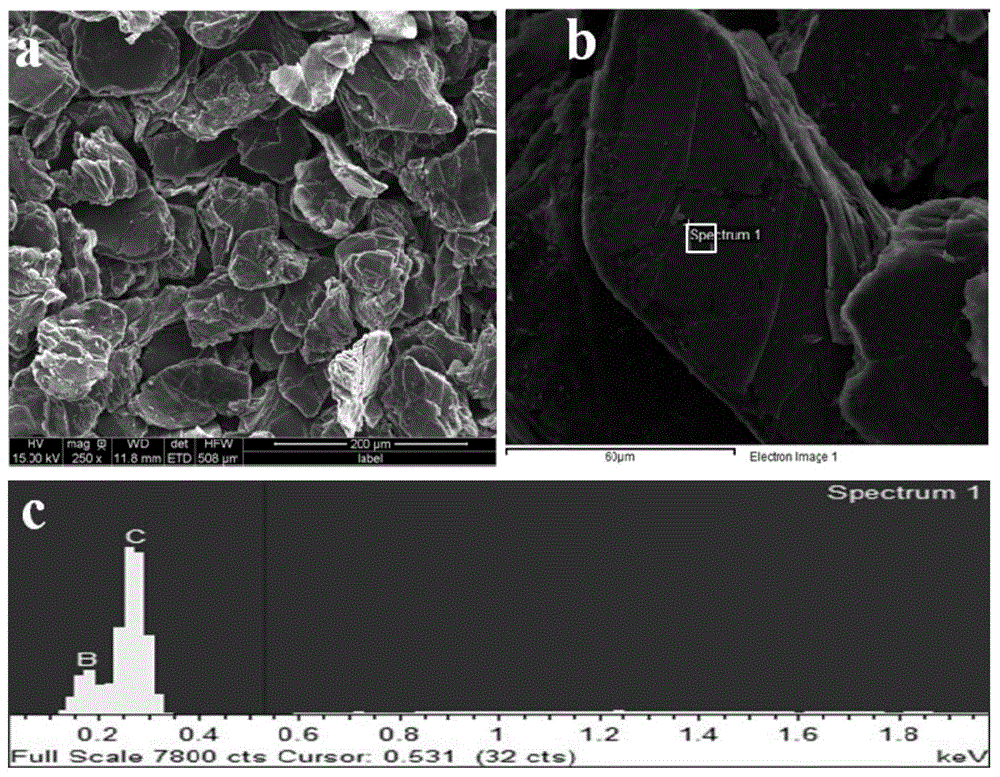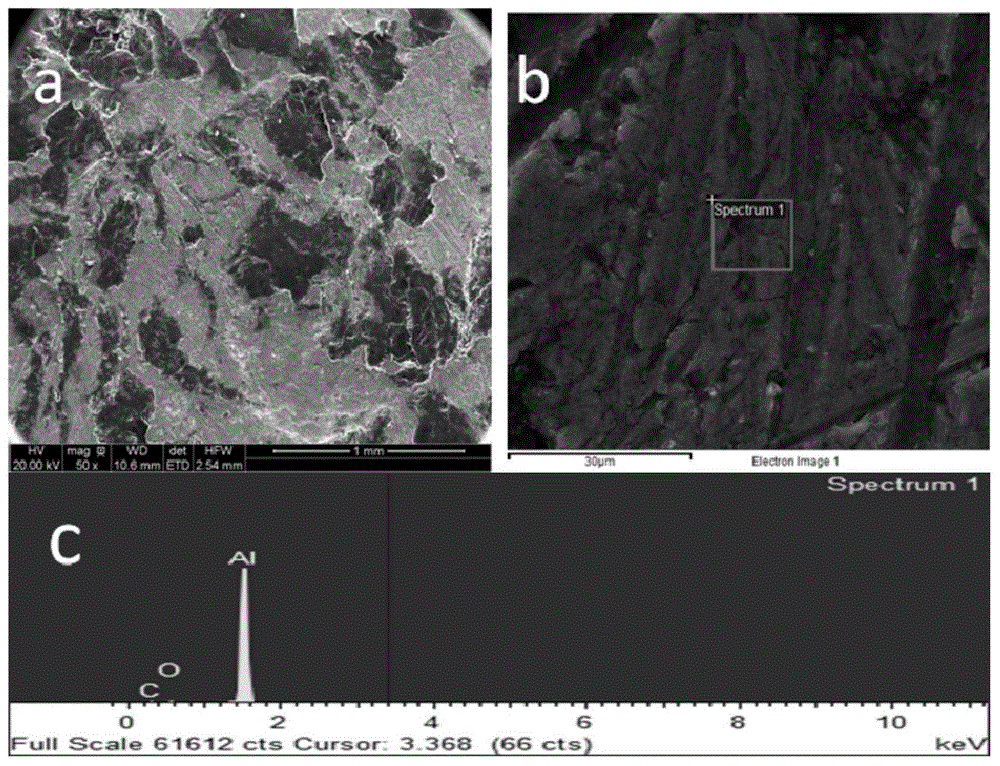Graphite-metal heat conduction composite material and preparation method thereof
A metal composite material and composite material technology, applied in the field of graphite-metal thermally conductive composite materials and their preparation, can solve the problems of low bonding capacity, high equipment requirements, poor wettability, etc., and achieve good thermal conductivity and high bonding strength. Effect
- Summary
- Abstract
- Description
- Claims
- Application Information
AI Technical Summary
Problems solved by technology
Method used
Image
Examples
preparation example Construction
[0064] In the preparation method of the present invention, the pressure infiltration reaction is usually carried out at 400-1500°C (preferably 600-1500°C), and the reaction time is usually 1-200 minutes (preferably 10-30 minutes) .
[0065] The present invention provides a method for preparing a graphite-metal composite material, which preferably includes the steps:
[0066] (1) Preparation of graphite composite:
[0067] (1.1) Provide a mixture containing graphite particles, carbide-forming elements and salt; preferably, the mass fraction of the salt is 30-80 wt% based on the total weight of the mixture; preferably, 50-70 wt%.
[0068] Calculated by the total weight of the mixture, the mass fraction of carbide forming elements is 0.1-10 wt%; preferably, it is 2-5 wt%; more preferably, it is 3-7.5 wt%.
[0069] (1.2) Under vacuum, the mixture obtained in step (1.1) is heated and reacted (for example, at 600-1500°C or 800-1300°C), the product obtained is washed with water (such as deion...
Embodiment 1
[0085] Preparation of graphite-aluminum composite material No.1:
[0086] 1.1. Preparation of graphite-chromium carbide-chromium composite
[0087] Take the scaly graphite powder with a particle size of 300μm~500μm, sodium chloride and a small amount of chromium powder and mix uniformly to make a mixed powder. According to the total weight of the mixed powder, sodium chloride accounts for 75wt% and chromium powder accounts for 5wt%. Put it into a vacuum carbon tube furnace, evacuate to a vacuum of about 10-220Pa, a heating rate of 15°C / min, raise the temperature to 900°C, hold for 60min, and then cool to room temperature along with the furnace. Take out the mixed powder treated at high temperature, put it into a beaker containing deionized water, put the beaker containing the treated mixed powder and deionized water into the drying box, set the temperature to 85°C, keep it warm for 30 minutes, take out the beaker and Pour out the aqueous solution of sodium chloride, re-pour deioni...
Embodiment 2
[0091] Example 2 Preparation of graphite-aluminum composite material No. 2
[0092] 2.1 Preparation of graphite-boron carbide-boron composite
[0093] Take flake graphite powder with a particle size of 300μm~500μm, sodium chloride and a small amount of boron powder to make a mixed powder. Calculate the total weight of the mixed powder, sodium chloride accounts for 75wt% and boron powder accounts for 5wt%. Put it into a vacuum carbon tube furnace, evacuate to a vacuum of about 10~220Pa, heat it up to 1500°C at a heating rate of 15°C / min, keep it for 60min, and then cool it to room temperature along with the furnace. Take out the mixed powder treated at high temperature, put it into a beaker containing deionized water, put the beaker containing the treated mixed powder and deionized water into the drying box, set the temperature to 85°C, keep it warm for 30 minutes, take out the beaker and Pour out the aqueous solution of sodium chloride, re-pour in deionized water and repeat the ab...
PUM
| Property | Measurement | Unit |
|---|---|---|
| Thermal conductivity | aaaaa | aaaaa |
| Thermal expansion coefficient | aaaaa | aaaaa |
| Particle size | aaaaa | aaaaa |
Abstract
Description
Claims
Application Information
 Login to View More
Login to View More - R&D
- Intellectual Property
- Life Sciences
- Materials
- Tech Scout
- Unparalleled Data Quality
- Higher Quality Content
- 60% Fewer Hallucinations
Browse by: Latest US Patents, China's latest patents, Technical Efficacy Thesaurus, Application Domain, Technology Topic, Popular Technical Reports.
© 2025 PatSnap. All rights reserved.Legal|Privacy policy|Modern Slavery Act Transparency Statement|Sitemap|About US| Contact US: help@patsnap.com



